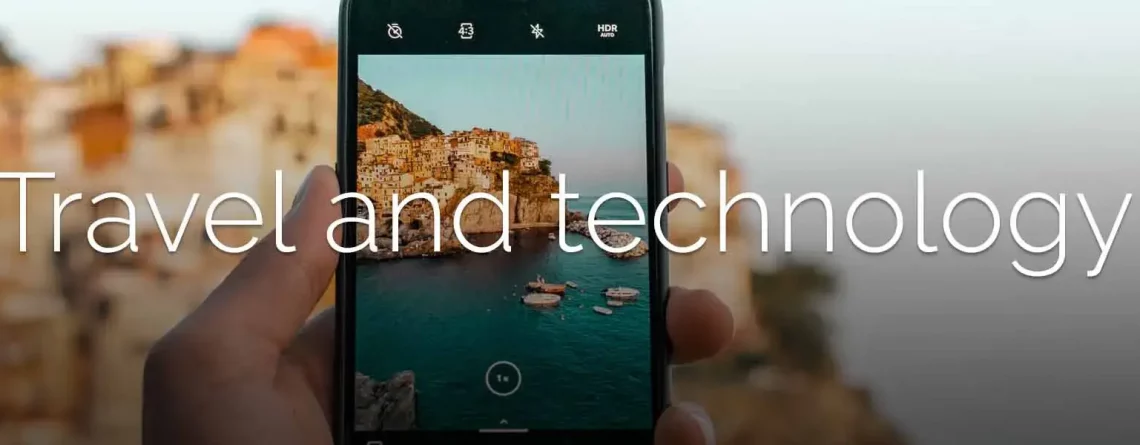What Is The Next Big Thing in Travel Technology?
Facebook Messenger is making it possible to receive boarding passes, flight status updates, and other travel information through the chat platform. This technology could eliminate downloading a separate travel app to check flight status. Other new technologies are entering the travel industry. Augmented and virtual reality could make it possible to see cruise ship cabins or even the Great Wall of China in the real world. Predicting the future is impossible, but we can expect some exciting developments shortly.
Table of Contents
Augmented Reality
Augmented reality (AR) is a fascinating new technology that can provide valuable information to travelers. Most travelers use public transportation, so AR apps can help them plan a trip. AR apps can give a wealth of historical and travel information and assist navigation. Many museums are treasure troves of information, but they are often crowded or lack a guide. Augmented reality apps can provide this information in real-time, making them the perfect tool to enhance your museum visit.
Travel is an industry that requires extensive research and planning, and Augmented Reality Development allows companies to enhance their physical surroundings. Augmented reality is an ideal way to provide this information to customers at any time of the day or night. Because travel is a complex process, customers often need information before and even after they’re back home. With Augmented reality, this information will be available anytime, anywhere.
With Augmented Reality, customers can interact with objects in their surroundings, including hotels, restaurants, and attractions. They can also see virtual audiovisual effects, 3D models, animations, and custom sound effects. Hotels can use Augmented Reality to engage with their guests, encourage them to make reservations, and explore their surroundings. They can also use Augmented reality to display their services, like a map of restaurants and hotels.
For consumers, the use of AR is already being tested in the field. For example, Ikea has launched an AR app that lets users try furniture before buying it. Meanwhile, companies like Sephora and Target also use AR to offer a virtual try-on solution for clothing and accessories. There are many benefits of using augmented reality for training, and they can boost brand value and customer satisfaction.
Robotics
Hoteliers should prepare for the next big revolution by integrating robotics into their service models. From AI-powered chatbots to dancing airport cyborgs, robotics has become necessary to improve the guest experience. But before integrating robots into hospitality operations, companies must ensure that their social commitments do not suffer from the technology. Here are four things you should know about robots in travel.
In hotels, chatbots could replace human workers and make booking easier for guests. Moreover, they can serve as a virtual assistant for the guest. Whether answering basic questions, helping guests with their queries, or helping them find out information about specific destinations, chatbots are proving to be the next big thing in travel technology. And this technology is only going to get better as it continues to evolve.
The rise of robots is partly due to the changing habits of consumers. In the past, robots were used as gimmicks to entertain passengers and ensure an Instagram-worthy experience. But today, these robots are essential for Covid-19-safe occasions. This is because 74% of global consumers are concerned about Covid-19. Robots provide superior customer service, and chatbots can help reduce queue sizes.
While it’s difficult to predict how robots will impact the travel industry, there are already some promising developments. In Japan, service robotics is already hitting the hospitality industry. There are already several hotel robots, such as Leo, an autonomous baggage robot. Leo can assist customers during check-in, print bag tags, and transport suitcases in a bustling airport environment. Meanwhile, in Italy, a robot called Robby Pepper can assist hotel guests with travel-related queries.
Artificial Intelligence
AI has massive potential for the travel industry. With the rise of social media, users read reviews online to make purchasing decisions. Often negative feedback can damage a brand, so AI could help travel firms improve their online reputation. Companies that utilize AI in their travel offerings can use it to track customer reviews and sentiment on social media platforms. The AI in travel can even be used to help with employee expense procedures.
AI applications can help speed up tasks and increase accuracy. These can be hugely beneficial in an industry that is time-critical and information-changing. For example, Singaporean start-up Fooyo has created an AI-based audio guide for Chongqing that delivers local information based on a visitor’s location. As the travel industry recovers, AI-backed systems could become even more valuable.
AI-based solutions transform the travel industry from a seller’s to a buyer’s market. But it does raise privacy concerns. While AI-powered solutions are designed to serve consumers better, data collection and analysis are still risky. It’s impossible to know which information is shared and how it’s used, so it’s impossible to guarantee privacy. However, the benefits of AI-powered solutions will likely outweigh the risks.
AI-powered chatbots can help travelers in their face-to-face interactions. They could eliminate information desk queues and improve efficiency. Hilton, for instance, recently deployed an AI robot named Connie. Connie uses speech recognition and artificial intelligence to understand human conversations. Learning about the human voice can better respond to customer questions. Eventually, AI-powered receptionists could help travelers make decisions more efficiently and save time.
Drones
Drones are already on the market and are quickly growing in popularity. They’ll complete mundane, dirty, and hazardous tasks like window washing and construction surveys. Drones are also finding a niche in advertising and entertainment. Drones will soon be able to pull banners and put on light shows. But how long will it take for drones to replace the need for human pilots? The answer may be at least ten years.
The initial connotations of drones were negative. The technology has since gained a more positive spin, however. Drones can be used in many aspects of life, from capturing historical moments to resolving security issues on a massive scale. Some companies have even begun using drones to speed up delivery processes in some areas.
Shortly, there will be a growing market for drones. Insider Intelligence expects drone sales to reach $12 billion by 2021. Personal drones will also be used for film-making, gaming, and photography. By 2022, it’s estimated that consumers will spend $17 billion on drones. Despite the recent hype, drones come in many sizes and prices. Single-rotor drones can cost less than $100, while multi-camera quadcopters can be as much as $1,000 or more. They can even have first-person control for the whole flight experience. Although drones are still a novelty for consumers, they’re readily available and affordable for those who want to get started with the technology.
Ultimately, this is a question of how users and vendors can work together to get their products to market. The hype cycle is a cyclical process that describes how drones develop. The first step is identifying use cases for new technology. A successful pilot will identify use cases that make sense and help the technology evolve.
Read More:Do You Plan on Using the Metaverse in the Future?
Space Tourism
The next major leap in travel technology will be space tourism or travel in space. Space tourism companies have already begun developing spacecraft for tourists and business people. Boeing is working on the CST-100 Starliner crew capsule to carry tourists to the area. According to the company’s website, space tourists can purchase seats for $125,000. By 2028, space tourism companies will be able to sell seats for private space stations.
The travel industry represents the most important industrial sector on Earth. The annual tourism market was estimated at $3400 billion in 1995. With a space tourism industry, this market could be double the size of the civil space industry, which spends about $30 billion annually. Initial market research has shown that four percent of Germans would spend their annual salary on space travel. Space tourism could become a billion-dollar industry by 2030.
The awe-inspiring experience of viewing Earth from space is one of the primary attractions for commercial space passengers. In addition to the fantastic views, astronauts will experience a cognitive change in consciousness, known as the Overview Effect. They will feel a new sense of responsibility to protect planet Earth. This new understanding could change human compassion and lead to a more responsible, earth-friendly world. But before commercial space travel becomes widespread, many more issues must be solved.
The first commercial service for space tourism is likely to be in China. The Chinese Academy of Launch Vehicle Technology is the nation’s foremost carrier rocket developer and could eventually become the country’s first space tourism provider. They are working on a new spacecraft that will cost approximately $200,000 to $250,000 to launch into space. They plan to test the flight in 2025 and found the full-scale hypersonic vehicle five years later.






Leave a Reply